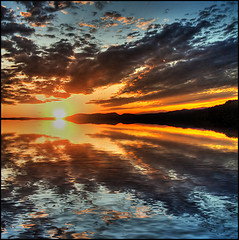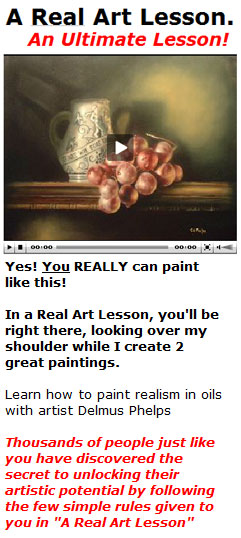Reflections of Color
Posted by admin | Under Color Saturday Apr 24, 2010 The painting of nature is the painting of change and movement, and the artist should always be on the alert to study cause and effect. Color has movement. Relative to the painting of the ocean, it is pure abstract. Perhaps this is best revealed by dipping a bucket of water from any part of the open ocean; it has no color, but is transparent. From the outset you must come to understand that the ocean is a great liquid mirror reflecting to the artist things that play across its surface. At times the mirror breaks, allowing you to peer into the great light-absorbing depths of the ocean. Other times, it lets light strike the bottom and reflect to the surface.
The painting of nature is the painting of change and movement, and the artist should always be on the alert to study cause and effect. Color has movement. Relative to the painting of the ocean, it is pure abstract. Perhaps this is best revealed by dipping a bucket of water from any part of the open ocean; it has no color, but is transparent. From the outset you must come to understand that the ocean is a great liquid mirror reflecting to the artist things that play across its surface. At times the mirror breaks, allowing you to peer into the great light-absorbing depths of the ocean. Other times, it lets light strike the bottom and reflect to the surface.
The fishing folk of the world use this knowledge, especially in the tropics where the white sands and coral reflect large amounts of light, revealing different shades and hues of color, determining for the fisherman the depth of the water for his safe passage. In actuality, the colors in the foreground of a painting from shore may be the same as the colors on the horizon, but are not revealed to us as the same. We are the stationary ones. The light and colors are moving through layers of atmosphere which restrict their and colors are moving through layers of atmosphere which restrict their tones and intensities-they reach the viewer sapped of strength and changed in character. Along with the usual dark-to-light value changes as you recede into your canvas, you must create the illusion of great depth by adding these color changes.
Many fine artistic, scientific books have been written on the subject of color and its relation to the artist and nature. Study them and experiment by yourself to gain a working knowledge of the subject. There is no end. Often I have observed students of painting returning day after day to the same spot on the rocks to work. The first day they lay in the sky, the second the ocean, and so forth, finishing each as they go, never thinking that the first day’s sky may have no relation to the color of the water the next day. There is no better way to miss the boat.
A good painting must be of the one moment in time when the artist made his decision: this is it! From that second on, the painting must stem from your mind, always holding true to your original concept, reflecting and relating one passage to the other, building an over-all concept of your first thought, only using the scene before you as a foundation block to your composition. If for a moment you allow yourself to copy what is in front of composition. If for a moment you allow yourself to copy what is in front of the painting. The sun has moved, the sky has changed, the colors are different. If you go on by the hour in this manner, then the painting will end up as a hodge-podge of unrelated and uninteresting facts. Science may have use for these facts, but not the artist. An orchestra that allows its musicians to play as they wish, one giving no thought to the other, does not make music, only discord. A conductor must make each musician take his place and play in relation to the others, reflecting his command in order to make harmony. You, the artist, must be the conductor making each value in color do its part to produce a painting with harmony and beauty.
